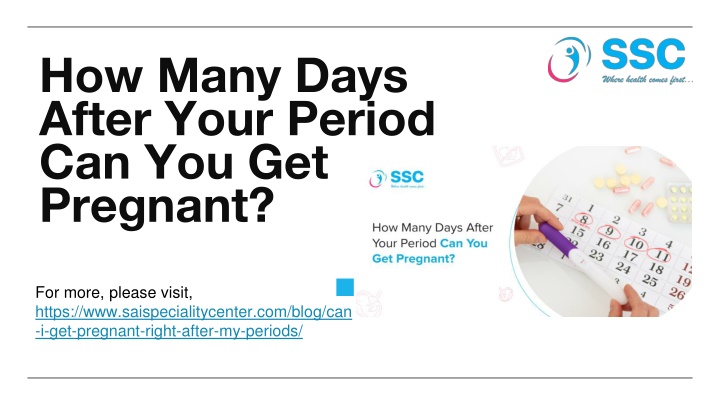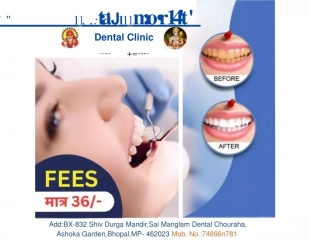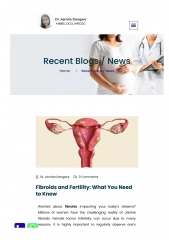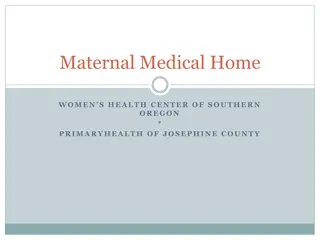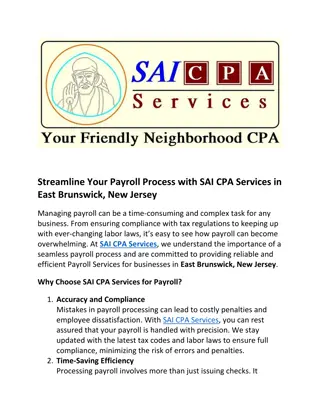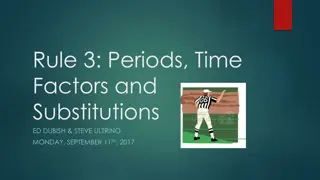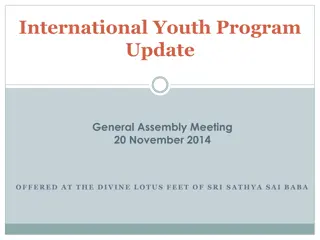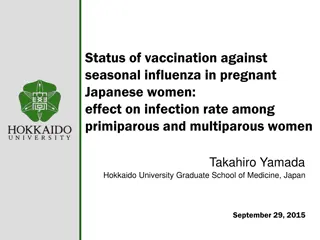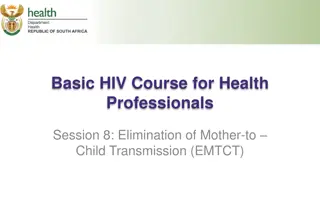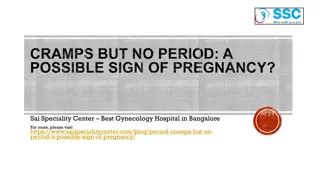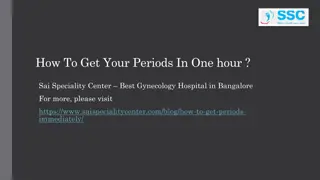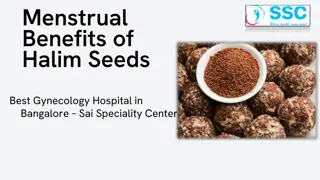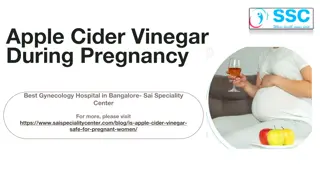How many days after your periods can you get pregnant - Sai Speciality Center
It is possible to get pregnant right after your period, but the probability is low. Know which day increases your chances of getting pregnant.
Download Presentation

Please find below an Image/Link to download the presentation.
The content on the website is provided AS IS for your information and personal use only. It may not be sold, licensed, or shared on other websites without obtaining consent from the author.If you encounter any issues during the download, it is possible that the publisher has removed the file from their server.
You are allowed to download the files provided on this website for personal or commercial use, subject to the condition that they are used lawfully. All files are the property of their respective owners.
The content on the website is provided AS IS for your information and personal use only. It may not be sold, licensed, or shared on other websites without obtaining consent from the author.
E N D
Presentation Transcript
A blue letters on a black background Description automatically generated How Many Days After Your Period Can You Get Pregnant? A hand holding a pen Description automatically generated For more, please visit, https://www.saispecialitycenter.com/blog/can -i-get-pregnant-right-after-my-periods/
A blue letters on a black background Description automatically generated Understanding Your Reproductive Cycle The menstrual cycle typically lasts about 28 days, but can range from 21 to 35 days among individuals. Menstruation occurs when the egg is not fertilized, resulting in the shedding of the uterine lining, which is known as the menstrual period. Ovulation is when a mature egg is released from the ovary, usually occurring around day 14 of a 28-day cycle, marking During the fertile window the peak of fertility. During the fertile window, which spans 5 days before and one day after ovulation, the chances of conception are highest. timing of ovulation and menstruation Understanding the timing of ovulation and menstruation is crucial for those trying to conceive, as it helps identify the optimal days for intercourse.
A blue letters on a black background Description automatically generated Pregnancy After Your Period Pregnancy can occur right after your period Pregnancy can occur right after your period, although it is relatively uncommon. Suppose you have a short menstrual cycle, typically around 21 days. In that case, ovulation may happen soon after your period ends, increasing the chances of conception if you have unprotected sex towards the end of your period. Additionally, sperm can survive in the female reproductive tract for up to five days, so if ovulation occurs shortly after menstruation, there is a potential for the sperm to fertilize the egg, leading to pregnancy.
A blue letters on a black background Description automatically generated Sex During Your Period The likelihood of getting pregnant during menstruation is generally low, as ovulation typically occurs several days after a period ends. getting pregnant during menstruation Sperm can survive in the female reproductive tract for up to 5 days, which can lead to pregnancy if ovulation occurs soon after menstruation. In cases of shorter menstrual cycles, ovulation may happen shortly after the period, increasing the chances of conception if intercourse occurs during menstruation. Menstrual flow can wash away sperm, reducing the chances of fertilization, but some sperm may still reach the uterus before ovulation occurs. While getting pregnant during this time is rare, it is not impossible, particularly for women with irregular cycles or shorter cycle lengths.
Fertility Window Explained A blue letters on a black background Description automatically generated fertility window The fertility windowis the optimal time in the menstrual cycle for conception, typically spanning six days: the five days leading up to ovulation and the day of ovulation itself. This is significant because it represents the period when sperm can successfully fertilize an egg, maximizing the chances of pregnancy. Understanding this window helps in planning for conception, as the timing of sexual intercourse during this phase greatly influences fertility outcomes.
A blue letters on a black background Description automatically generated Timing of Ovulation Ovulation Timing and Cycle Length Ovulation typically occurs 14 days before the next period begins for a 28-day cycle. For shorter cycles (21 days), ovulation can occur as early as day 7. Longer cycles (35 days) may see ovulation around day 21, affecting fertility windows. Cycle irregularities can make ovulation unpredictable, complicating conception. Tracking ovulation through methods like temperature charting can aid in understanding personal cycle patterns. Impact on Fertility Fertility is highest during the 5 days leading up to and including ovulation. Sperm can survive in the female reproductive tract for up to 5 days, increasing the chances of conception if intercourse occurs prior to ovulation. Understanding ovulation timing helps in planning for pregnancy effectively. Women with irregular cycles may need to rely on ovulation kits to identify fertile windows.
A blue letters on a black background Description automatically generated When are You Most Fertile? The most fertile times typically occur in the days leading up to and including ovulation, generally 12 to 16 days before the start of your next period. The most fertile times If you have a 28-day cycle, ovulation usually happens around day 14, making days 12 to 14 your peak fertility days. Women with shorter cycles (e.g., 21 days) may ovulate as early as day 7, so days 5 to 7 are critical for conception. Tracking basal body temperature and observing changes in cervical mucus can help identify the most fertile days more accurately. The fertile window is generally considered to be the three days before ovulation, the day of ovulation, and the day after. This maximizes the chance of sperm meeting the egg.
A blue letters on a black background Description automatically generated Factors Affecting Ovulation Physical Activity Nutrition and Diet Stress Levels Regular moderate exercise promotes healthy body weight and hormonal balance, both crucial for optimal ovulation. A balanced diet rich in vitamins and minerals supports hormonal function and regular ovulation cycles. High stress can disrupt hormonal balance, potentially delaying ovulation and affecting overall fertility.
A blue letters on a black background How to increase your fertility? Description automatically generated Healthy Diet Regular Exercise Incorporate a balanced diet rich in fruits, vegetables, whole grains, and lean proteins. Foods high in antioxidants, omega-3 fatty acids, and folic acid can improve reproductive health. Engage in moderate physical activity regularly. Exercise helps maintain a healthy weight, reduces stress, and enhances hormonal balance, all of which contribute to fertility. Stress Management Avoid Harmful Substances Implement stress-reduction techniques such as yoga, meditation, or deep-breathing exercises. High stress levels can disrupt hormonal balance and ovulation. Limit alcohol consumption, quit smoking, and avoid recreational drugs. These substances can negatively affect fertility and overall reproductive health.
A blue letters on a black background Description automatically generated Thank You For more details, please visit - https://www.saispecialitycenter.com/ To book an appointment Phone: 99019 25700, 80887 01001 Email: saispecialitycenter.helpdesk@gmail.com Address : 201-1,1st A cross, 2nd Main Road, East of NGEF Layout, Kasturi Nagar, Bengaluru, Karnataka 560043
